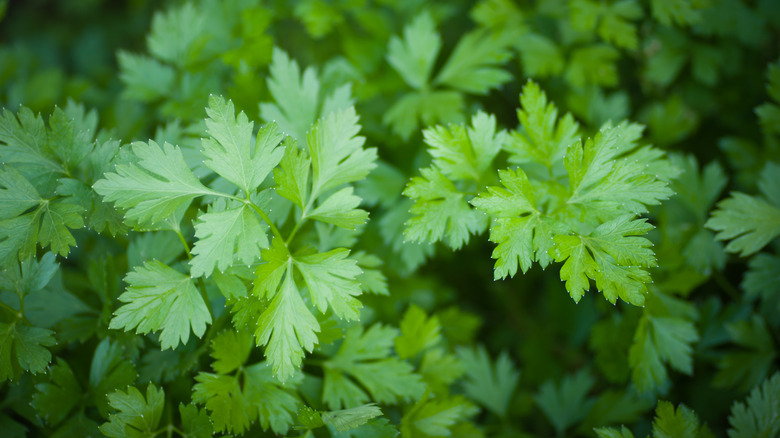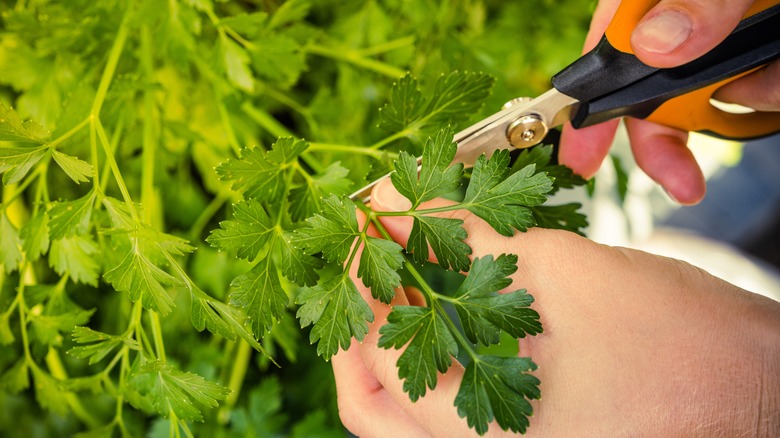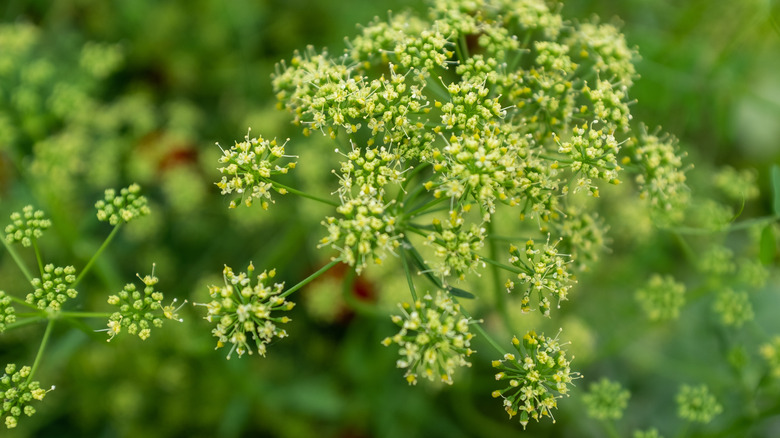Easy Tips & Tricks To Prune Parsley For More Produce In Your Garden
Parsley (Petroselinum crispum) is a beloved herb in the kitchen and garden. Even if you don't want to grow the plants to eat, they can help you attract more butterflies with their abundant blooms, and hungry caterpillars can eat up the leaves. Regardless of why you choose to grow it, you'll want to make the most of your plants to get sufficient foliage all season long. Parsley is a biennial plant that's treated as an annual in most gardens because cold winters will kill them. For a long, bountiful harvest, prune them often and efficiently, and don't allow them to grow flowers.
Proper pruning will stimulate more growth, guaranteeing you get the most out of your plant. Doing it incorrectly won't ruin your harvest, but you'll miss out on a lot of potential foliage before the plant goes dormant or dies for the winter. The best time to prune parsley is during its first year, ideally in the spring. If the plant survives the winter and regrows in the second year, the leaves will taste more bitter than those of last year's batch. The leaves will still be edible, but they won't taste as great.
Prune parsley at the base
Caring for a parsley plant is pretty straightforward. Pruning and harvesting may also seem simple, but you can shorten the plant's growing season with the wrong pruning technique. The best way to harvest your parsley and keep it around for longer is to cut the stems at the base of the plant right above the soil. Taking only the leaves and forgetting the stems will cause the plant to be less productive. It's better to remove the stem so the plant can focus its energy elsewhere.
Pruning frequently encourages new growth, but be careful not to overdo it. Parsley plants should always have at least two leaves left on the plant so it can continue growing. If you remove too many leaves, it can become weak and even die. If you allow your plant to become bushy, you won't have to worry about a dwindling plant. Or, you can succession plant several plants to have more than one to harvest from if you want to keep the plants small with just a few leaves each.
Pick parsley flowers immediately
Parsley plants bloom at the end of their lives, so if you see your plant growing flowers, it's a sign that the end is near. You typically won't see flowers until the second year, and if you live in a cold climate where you can't grow parsley in winter, you may not see the flowers at all. The flowers are great for pollinators, and you'll likely see a ton of them buzzing around the blooms. Although they're good for the insects, you'll want to remove flower stalks as soon as you see them. Keep the plant's energy focused on the parsley leaves by removing the flower stalk completely at the base of the plant.
If you want to enjoy the pollinators parsley flowers can bring, consider protecting parsley plants through winter or bringing them indoors. Then, come spring, interplant second-year plants with first-year plants to get a good mix of new and old. You can harvest the new ones while you let the older ones flower. Second-year plants are still edible, though their flavor might not be enjoyable enough to keep harvesting from them.


